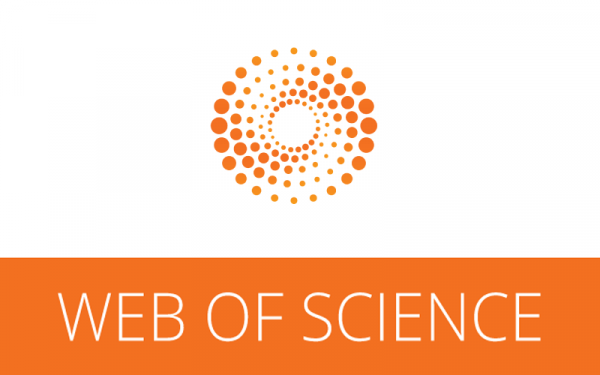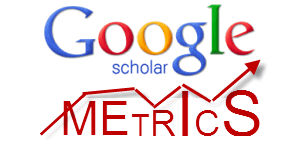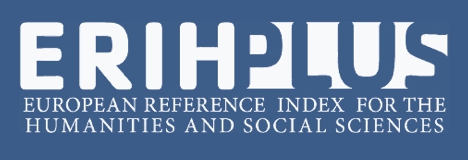PARTICIPATORY MONITORING OF WATER QUALITY IN A COASTAL LAGOON: INTEGRATING CITIZEN SCIENCE AND ENVIRONMENTAL EDUCATION THROUGH DIGITAL MEDIA
Abstract
The participatory monitoring of water quality in a coastal lagoon, conducted by public school students and made accessible to the community through a digital application with a QR code, represents an innovative strategy that integrates citizen science and educommunication. Over four months, students actively engaged in the collection and analysis of limnological parameters, linking school curriculum with scientific practice and enhancing the understanding of local ecology. The results demonstrate that this approach strengthens community engagement and environmental awareness, fostering behavioral changes aimed at the sustainable management of water resources. Disseminating the findings through digital media expanded the reach of environmental information and encouraged social participation in territorial governance, particularly within protected areas. This initiative contributes to the development of environmentally conscious citizens, promotes participatory management of conservation units, and reinforces urban planning and climate resilience.
References
ADAMOU, K. et al. Young people and citizen science: Impact, challenges and opportunities. Environmental Education Research, v. 27, n. 1, p. 1–16, 2021.
AZEVÊDO, T. R. et al. Environmental monitoring in protected areas through citizen science: Contributions to conservation and community engagement. Environmental Monitoring and Assessment, v. 194, n. 3, p. 181–195, 2022.
BALLARD, H. L. et al. Contributions of citizen science to conservation: Effects on the quantity and quality of data and participants' knowledge, attitudes, and behaviors. Biological Conservation, v. 208, p. 121–132, 2017.
BALLARD, H. L. et al. Youth-focused citizen science programs: Promoting learning and engagement in environmental science. Environmental Education Research, v. 30, n. 1, p. 50–69, 2024.
BRASIL. Resolução CONAMA n.º 357, de 17 de março de 2005. Dispõe sobre a classificação dos corpos de água e diretrizes ambientais para o seu enquadramento. Disponível em: https://www.gov.br/ibama/pt-br/acesso-a-informacao/legislacao/legislacao-1/agua/resolucoes/resolucao-conama-no-357-2005.pdf Acesso em: 20 mar. 2024.
BRASIL. Resolução CONAMA n.º 274, de 29 de novembro de 2000. Dispõe sobre a qualidade da água em ambientes de recreação. Disponível em: https://www.icmbio.gov.br/cepsul/images/stories/legislacao/Resolucao/2000/res_conama_274_2000_classifica_praias.pdf Acesso em: 20 mar. 2024.
CASAN – Companhia Catarinense de Águas e Saneamento. Estudo ambiental da Lagoa do Peri. Florianópolis, 2015.
CUNHA, D. G. F. et al. Influência da urbanização e da cobertura do solo na qualidade da água em bacias hidrográficas urbanas. Revista Brasileira de Recursos Hídricos, v. 18, n. 4, p. 73–84, 2013.
FRANÇA, J. S.; CALLISTO, M. Monitoramento participativo da qualidade da água: guia metodológico para a educação ambiental. Brasília: WWF Brasil, 2019.
HENNEMANN, M. C. Unidades de conservação da Ilha de Santa Catarina: análise geográfica e gestão ambiental. Florianópolis: UFSC, 2010. 127 p. Dissertação (Mestrado em Geografia).
IRWIN, A. Citizen science: a study of people, expertise and sustainable development. London: Routledge, 1995.
JOLLYMORE, A. et al. Citizen science for water quality monitoring: Data quality and implications for participation. Science of the Total Environment, v. 595, p. 807–817, 2017.
KASTEN, E. P. et al. Validity and reliability of data collected by citizen scientists using water quality test strips in field and laboratory settings. Citizen Science: Theory and Practice, v. 6, n. 1, p. 1–15, 2021.
LEMES DA SILVA, C. et al. A importância das zonas ripárias na proteção da qualidade da água na Ilha de Santa Catarina. Revista Brasileira de Recursos Hídricos, v. 29, n. 2, p. e36, 2024.
LOPES, M. N., DALPIAZ, F. L., RECH, B., TEIXEIRA, J. D., RIBEIRO, I.S.S., MAGRI, D., CASTRO, D.G., PETRUCIO, M.M., & LEITE, N.K. Trends in aquatic ecology research associated with urbanization evolution during three decades in Santa Catarina Island/SC. Acta Limnologica Brasiliensia, 2020, vol. 32, e205 https://doi.org/10.1590/S2179-975X7719
LOPES, M. N., DECARLI, C. J., PINHEIRO-SILVA, L., LIMA, T. C., LEITE, N. K., & PETRUCIO, M. M. Urbanization increases carbon concentration and pCO2 in subtropical streams. Environmental Science and Pollution Research, 27(15), 18371-18381. 2020.
MENDONÇA, F. et al. Considerações sobre o ambiente físico e os recursos hídricos da Lagoa do Peri, Florianópolis (SC). Geosul, v. 4, n. 8, p. 21–38, 1989.
MONROE, M. C. Two avenues for encouraging conservation behaviors. Human Ecology Review, v. 10, n. 2, p. 113–125, 2003.
MORALES, L. P. et al. Participatory limnology: integrating local knowledge and scientific approaches for water management. Journal of Environmental Management, v. 265, p. 110–119, 2020.
MOSER, S.; MOREIRA, L. B. Educomunicação socioambiental: caminhos para a formação da cidadania ecológica. Revista Brasileira de Educação Ambiental, v. 15, n. 2, p. 130–146, 2020.
ROOD, S., SCOTT, M., DIXON, M., GONZÁLEZ, E., MARKS, C., SHAFROTH, P., & VOLKE, M. Ecological Interfaces between Land and Flowing Water: Themes and Trends in Riparian Research and Management. Wetlands, 40, 1801 - 1811. 2020.
SCHULTZ, P. W. Conservation means behavior. Conservation Biology, v. 25, n. 6, p. 1080–1083, 2011.
SOARES, I. O. Educomunicação ambiental: comunicação, educação e meio ambiente. São Paulo: Paulinas, 2013.
SOBCZAK, L. et al. Using citizen science to monitor the ecological health of streams and rivers. Environmental Monitoring and Assessment, v. 185, p. 3861–3872, 2013.
THEOBALD, E. J. et al. Global change and local solutions: Tapping the unrealized potential of citizen science for biodiversity research. Biological Conservation, v. 181, p. 236–244, 2015.
TOLEDO, V. M.; BARRERA-BASSOLS, N. La memoria biocultural: la importancia ecológica de las sabidurías tradicionales. Barcelona: Icaria Editorial, 2008.

This work is licensed under a Creative Commons Attribution-NonCommercial 4.0 International License.
Policy Proposal for Free Access Journals
Authors who publish in this journal agree to the following terms:
a. Authors retain the copyright and grant the journal the right of first publication, with the work simultaneously licensed under the Creative Commons Attribution License which allows the sharing of the work with acknowledgment of the authorship of the work and initial publication in this journal.
b. Authors are authorized to take additional contracts separately, for non-exclusive distribution of the version of the work published in this journal (eg publish in institutional repository or as a book chapter), with acknowledgment of authorship and initial publication in this journal.
c. Authors are allowed and encouraged to publish and distribute their work online (eg in institutional repositories or on their personal page) at any point before or during the editorial process, as this can generate productive changes, as well as increase the impact and The citation of published work (See The Effect of Free Access).





















